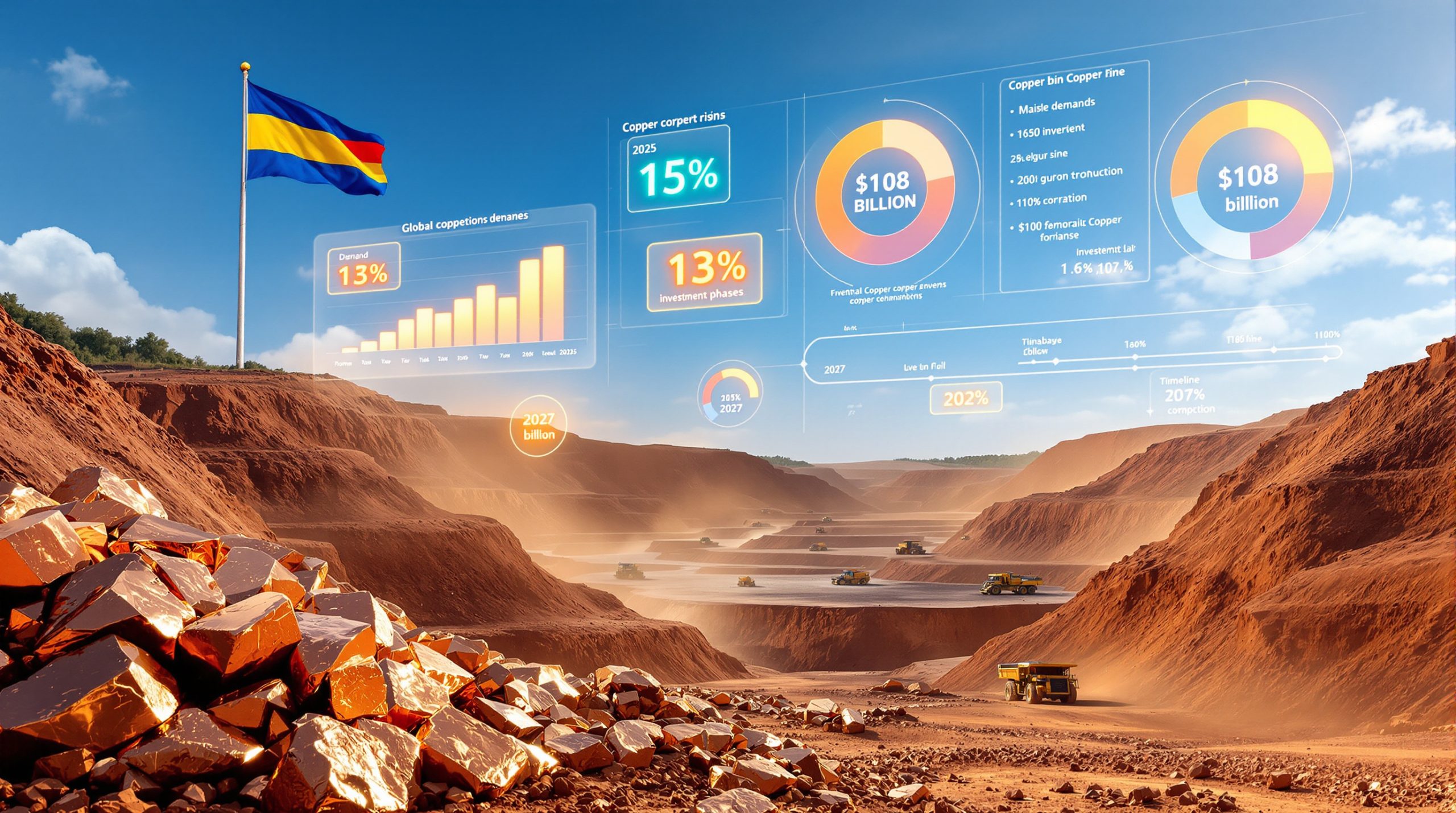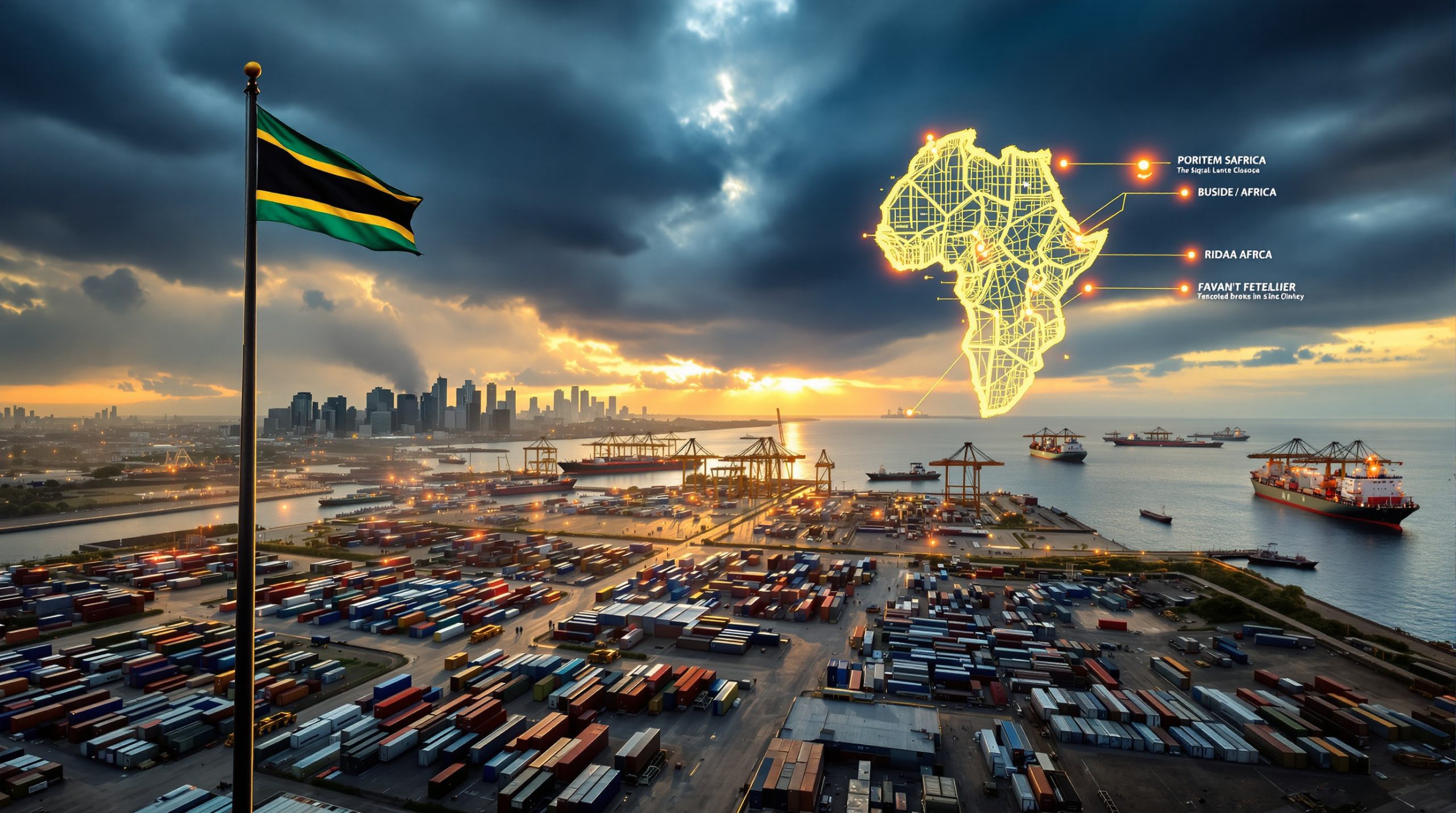Why Are Commodity Trading Giants Shifting Their Focus to Assets?
Commodity trading giants are increasingly diversifying their business models by investing in physical assets following a period of record profits. This strategic shift comes as market volatility normalizes after the exceptional conditions created by the pandemic and Russia's invasion of Ukraine. According to Trafigura CFO Stephan Jansma, the company's financial performance "has reached a new cruising altitude" – lower than the peak years but significantly higher than pre-COVID levels.
The push towards asset acquisition represents a fundamental evolution in how trading houses operate. With estimated profits of approximately US$20 billion over the last four years, companies like Trafigura have amassed substantial capital reserves that enable strategic investments across multiple sectors. Industry analysts note that this capital deployment reflects both defensive positioning and opportunistic growth strategies.
"The market conditions that created unprecedented trading opportunities are gradually reverting to more normalized patterns," explains industry consultant Marcus Bellamy. "Forward-thinking trading houses are using their accumulated capital to secure strategic positions that generate steady returns regardless of market volatility."
What Types of Assets Are Trading Companies Acquiring?
Trading companies are investing in various physical assets to complement their trading operations across multiple commodity classes:
- Oil and gas assets: Refineries, terminals, storage facilities, and power plants
- Metals and mining operations: Mining projects, processing facilities, and smelters
- Power generation: Renewable energy installations and traditional power plants
- Distribution networks: Fuel distribution systems and retail networks
Recent high-profile acquisitions illustrate this diversification strategy. Trafigura participated in acquiring France's Fos-sur-Mer refinery from ExxonMobil and purchased Greenergy's European and Canadian businesses. Gunvor acquired a 75% stake in a Bilbao-based power plant and bought TotalEnergies' 50% stake in Pakistan's Pak-Arab Refinery Limited. Vitol acquired Italian refining company Saras and Italy's largest LNG terminal.
The asset types being targeted often provide complementary value to existing trading operations. For example, acquiring refining capacity gives traders more flexibility in optimizing crude oil supply chains and capturing additional margin between crude and refined products markets.
How Much Capital Are Traders Investing in Asset Acquisition?
The scale of capital deployment by major trading houses reflects the extraordinary profitability of recent years. Trafigura alone generated approximately US$20 billion in profits over the last four years, providing substantial financial firepower for strategic investments.
Capital allocation strategies have become increasingly sophisticated:
- Around half of Trafigura's profits have been allocated to capital expenditure and shareholder returns
- The remainder has been used to strengthen the company's balance sheet and improve financial resilience
- Gunvor has reported significant increases in equity capital, providing flexibility for asset investments
- Mercuria has prioritized maintaining financial strength while selectively pursuing asset opportunities
According to McKinsey's analysis of commodity trading roles, asset acquisition by commodity traders "will likely accelerate in the near future" across both energy and metals sectors. This acceleration reflects both the availability of capital and strategic imperative to secure competitive advantages in increasingly crowded markets.
Why Is Asset Ownership Becoming Essential for Commodity Traders?
The shift toward asset ownership is driven by several strategic factors that reflect changing market dynamics and competitive pressures:
- Increased competition: Record profits have attracted new market entrants and prompted expansion by existing players, compressing margins in pure trading activities
- Competitive advantage: As Gunvor's CFO Jeff Webster noted, "If you can't compete in a spot market when it's so competitive, you need structural positions"
- Steady income streams: Physical assets provide more reliable cash flow to complement volatile trading revenues
- Diversification benefits: A more diversified business model helps maintain higher profitability levels across market cycles
- Information advantages: Owning physical assets provides valuable market intelligence that can enhance trading decisions
Industry analysts also point to the growing importance of securing privileged access to supply chains in an era of increasing geopolitical fragmentation. Physical assets can provide traders with optionality that pure financial players cannot match, particularly during supply disruptions or market dislocations.
How Are Traders Supporting the Mining Sector?
In the metals sector, traders are leveraging their capital, market expertise, and risk management capabilities to support mining projects through several mechanisms:
- Pre-payment facilities: Providing early-stage financing in exchange for agreed offtake arrangements
- Risk management services: Offering liquidity and market hedging expertise to producers
- Technical support: Providing industry knowledge and operational expertise
- Project development: Direct investment in exploration and development activities
- Logistics optimization: Improving supply chain efficiencies for mineral transport
Mercuria's CFO Guillaume Vermersch described this approach as "part of the value add" traders bring to the mining sector, alongside risk management and market expertise. Pre-payment arrangements are particularly valuable for mid-tier mining companies that may struggle to secure traditional bank financing for expansion projects.
"We're seeing increased demand for flexible financing solutions from mining companies focused on energy transition metals," notes commodities analyst Helena Robertson. "Trading houses that can combine financial capacity with technical expertise have a significant advantage in securing long-term supply agreements."
How Are Commodity Traders Diversifying Their Financing Sources?
Trading companies are expanding their financing strategies beyond traditional sources to support their growing asset bases and trading activities:
- Revolving credit facilities (RCFs): These continue to grow in size, with Trafigura's European RCF recently closing at a record US$5.6 billion
- Export credit agencies (ECAs): Trafigura has completed US$6 billion in ECA-funded facilities in recent years
- Structured finance: Creating tailored financing solutions for specific projects and trades
- Capital markets: Increased issuance of bonds and other debt instruments
- Private equity partnerships: Strategic alliances with investment firms on specific projects
This diversification of financing sources reflects both the growing scale of trading operations and the increased capital intensity of asset-heavy business models. By developing relationships with multiple financing providers, trading houses can optimize their capital structure and enhance financial resilience during market disruptions.
What Does Mercuria's Approach to Asset Investment Look Like?
Mercuria has taken a distinctive approach to asset investment that emphasizes strategic partnerships rather than outright ownership:
- Focused on "unlocking value around assets without specifically being the owner"
- Becoming a minority participant in assets rather than pursuing full ownership
- Helping deploy credit and debt instruments to support asset development
- Leveraging a stronger balance sheet and equity position built during high-volatility periods
- Creating value through optimizing operations and supply chains
This approach reflects Mercuria's core competencies in risk management and market optimization. By taking minority positions, the company maintains financial flexibility while still securing privileged access to physical commodities and market intelligence. Furthermore, Mercuria and Zambia forge a strategic copper trading partnership which illustrates how trading giants are creating value through strategic relationships rather than solely through direct asset ownership.
Industry observers note that Mercuria's approach may offer more resilience during market downturns compared to strategies that involve full asset ownership and associated fixed costs. The company effectively captures many of the benefits of asset integration while minimizing potential downside risks.
How Are Pre-Payment Facilities Being Used in the Metals Sector?
Pre-payment facilities have become an important tool for commodity trading giants turn to assets in the metals sector, creating mutually beneficial arrangements between traders and producers:
- Traders provide upfront financing to mining companies, typically secured against future production
- In exchange, they secure future offtake agreements for the metals produced
- This creates a win-win situation: miners get needed capital, and traders secure supply
- Gunvor specifically mentioned pre-payment facilities as "one of the ways we're looking at" entering the metals sector
- These arrangements are particularly valuable for critical minerals needed for energy transition
Pre-payment structures have evolved significantly in recent years, becoming more sophisticated and tailored to specific project needs. Modern arrangements often include tiered pricing mechanisms, volume flexibility, and integrated risk management components that help align incentives between traders and producers.
Mining finance specialist Daniel Richards explains: "Pre-payment facilities allow trading houses to effectively forward-purchase production at attractive prices while giving producers the capital they need for expansion. The most sophisticated deals now incorporate ESG requirements and performance metrics that benefit both parties."
What Are the Future Trends in Commodity Trading Business Models?
Several key trends are emerging in the commodity trading sector that will shape business models in coming years:
- Continued diversification into physical assets across multiple commodity classes
- Increased focus on metals and critical minerals as energy transition accelerates
- Growing importance of export credit agencies as financing partners
- More sophisticated risk management strategies leveraging both trading expertise and physical assets
- Integration of sustainability considerations into investment decisions
- Enhanced data analytics capabilities to identify market inefficiencies
- Greater regulatory scrutiny of trading activities and financial disclosures
- Convergence between trading houses and traditional industrial players
The most successful trading houses will likely be those that can effectively balance asset ownership with trading agility, maintaining the entrepreneurial culture that has historically characterized the sector while developing the operational capabilities needed to manage physical assets efficiently. Looking ahead, 2025 Mining and Finance Industry Predictions suggest that commodity trading giants will continue to play an increasingly important role in resource development and supply chain optimization.
Moreover, as highlighted in an Oliver Wyman report on commodity trading industrialization, the sector is experiencing a fundamental transformation toward more structured business models that blend trading expertise with industrial capabilities. This evolution is particularly evident in how traders are positioning themselves across multiple regions, including emerging mining investment trends in the Middle East.
FAQs About Commodity Trading Companies' Asset Strategies
How do physical assets help commodity traders manage risk?
Physical assets provide traders with "structural positions" that generate steady cash flow, helping to offset the inherent volatility of pure trading activities. They also provide information advantages and supply chain visibility that can improve trading decisions. By controlling key infrastructure nodes like terminals, storage facilities, or processing assets, traders can create optionality that enhances profitability during market dislocations.
Why are commodity traders particularly interested in metals assets?
Metals, especially those critical for energy transition technologies, represent a significant growth opportunity. As the world shifts toward renewable energy and electrification, demand for copper, nickel, lithium, and other metals is expected to increase substantially. Many traders see the metals sector as underdeveloped compared to oil markets, offering greater opportunities for value creation through strategic investments and supply chain optimization. This trend aligns with broader opportunities in navigating investment opportunities amid commodity cycle shifts.
What role do export credit agencies play in traders' financing strategies?
ECAs have become increasingly important financing partners for commodity trading giants turn to assets, providing longer-term funding that enables traders to facilitate trades into specific countries. Trafigura has completed US$6 billion in ECA-funded facilities in recent years. These agencies typically offer more favorable terms for projects that support national economic interests, including resource security and export promotion. For instance, Australia's 400 Million Boost to Iluka's Rare Earth Refinery exemplifies how government support can facilitate strategic resource development.
Want to Stay Ahead of the Next Major Mineral Discovery?
Discover significant ASX mineral discoveries in real-time with Discovery Alert's proprietary Discovery IQ model, turning complex mining data into actionable investment insights. Explore why major discoveries can lead to substantial returns by visiting Discovery Alert's dedicated discoveries page and begin your 30-day free trial today.




